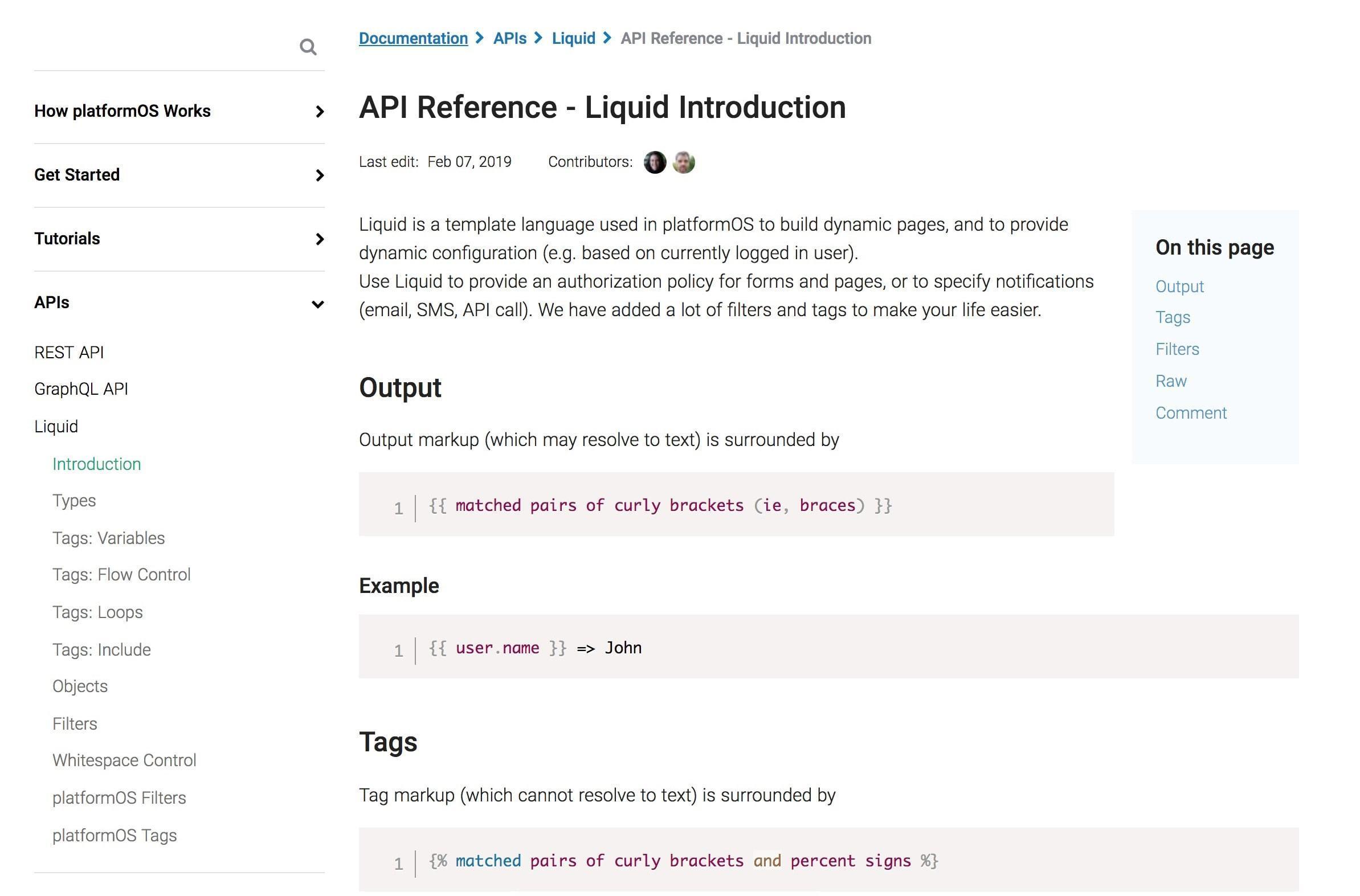





Recently, we’ve updated the platformOS documentation with a complete guide to Liquid Markup, including an introduction, types, tags, filters, whitespace control, and detailed descriptions of platformOS-specific filters and tags — all of them demonstrated with examples.
When building platformOS, an API-driven, model-based application development platform, we needed a way to render layouts and data without the need for access to underlying backend technologies — that meant we had to use a templating language.
We decided to go with Liquid, because:
Many of our Partners noticed that if they want to learn Liquid, they have to jump between the official Liquid documentation and our docs to get the complete overview. We also noticed missing parts and holes in some of the docs, so to help our Partners and all learners of Liquid, we decided to create a compilation of the best parts of all sources to offer a single, comprehensive guide.
Knowledge about Liquid is scattered through many resources. Some of them are better in some parts, some of them have unique parts (for example, mentions of the with and for arguments for the include tag), some have better examples for filters.
Here’s a list of resources we used:
Inspired by the official documentation, we divided our Liquid documentation into multiple parts for easy access, keeping it logical for newcomers. We started with an introduction, then described types, tags grouped into three larger sections (variables, flow control, and loops), filters, objects, and whitespace control.
At the bottom of the menu, we included platformOS-specific tags and filters. You should start learning about these when you’re comfortable with Liquid in general. We added a lot of custom filters and tags that make dealing with Liquid, dates, JSON, data structures, encoding, or URL templates easier. platformOS gives you the power to improve your code by exposing the Liquid profiler and giving you a filter that measures the execution time of any given block with a 1ms granularity.
Because pages can be long with a lot of filters on them, we are planning to implement a table of contents to help orientation and navigation. If you have any suggestions for improvements or would like to extend our docs, please contribute to our documentation on GitHub.
We hope to provide docs that you can use as a newcomer to quickly learn Liquid basics and start developing on platformOS using our custom filters and tags.
Ensure your project’s success with the power of platformOS.